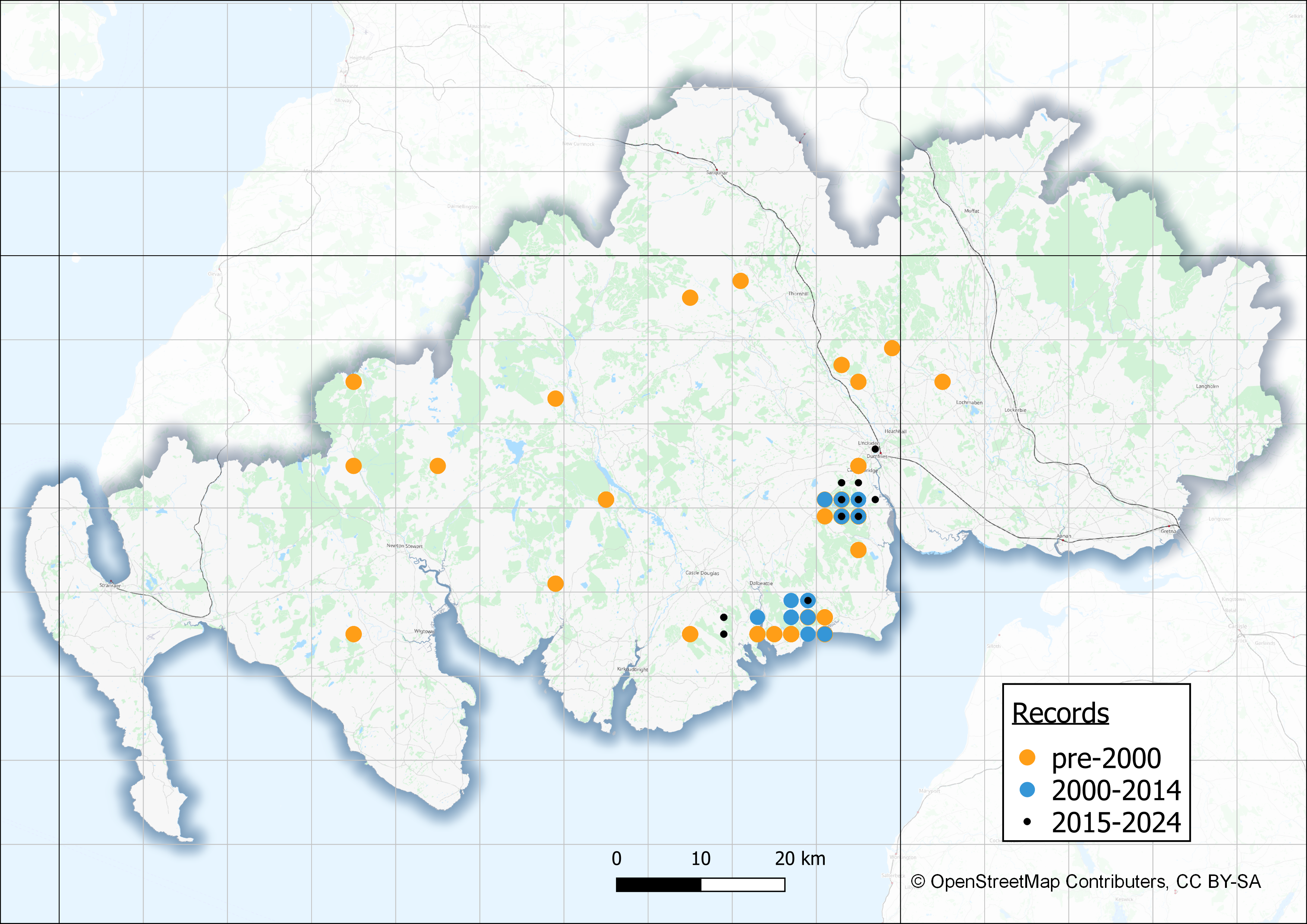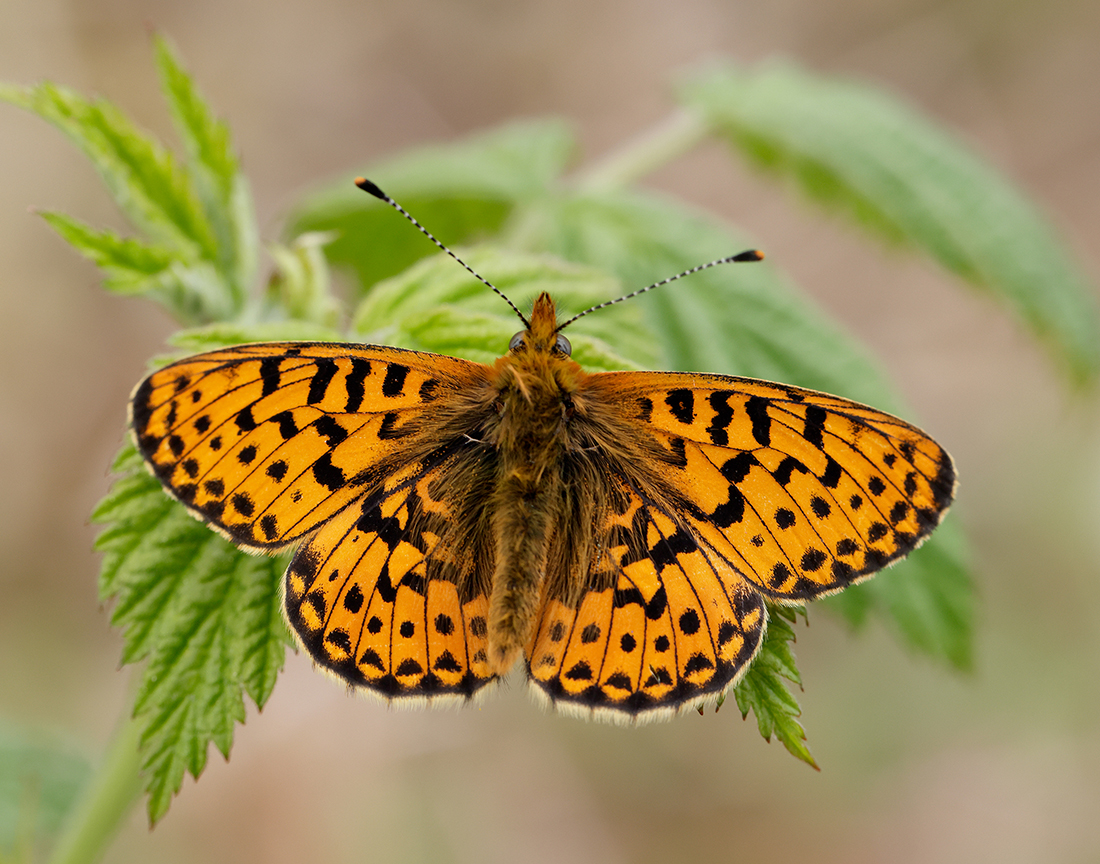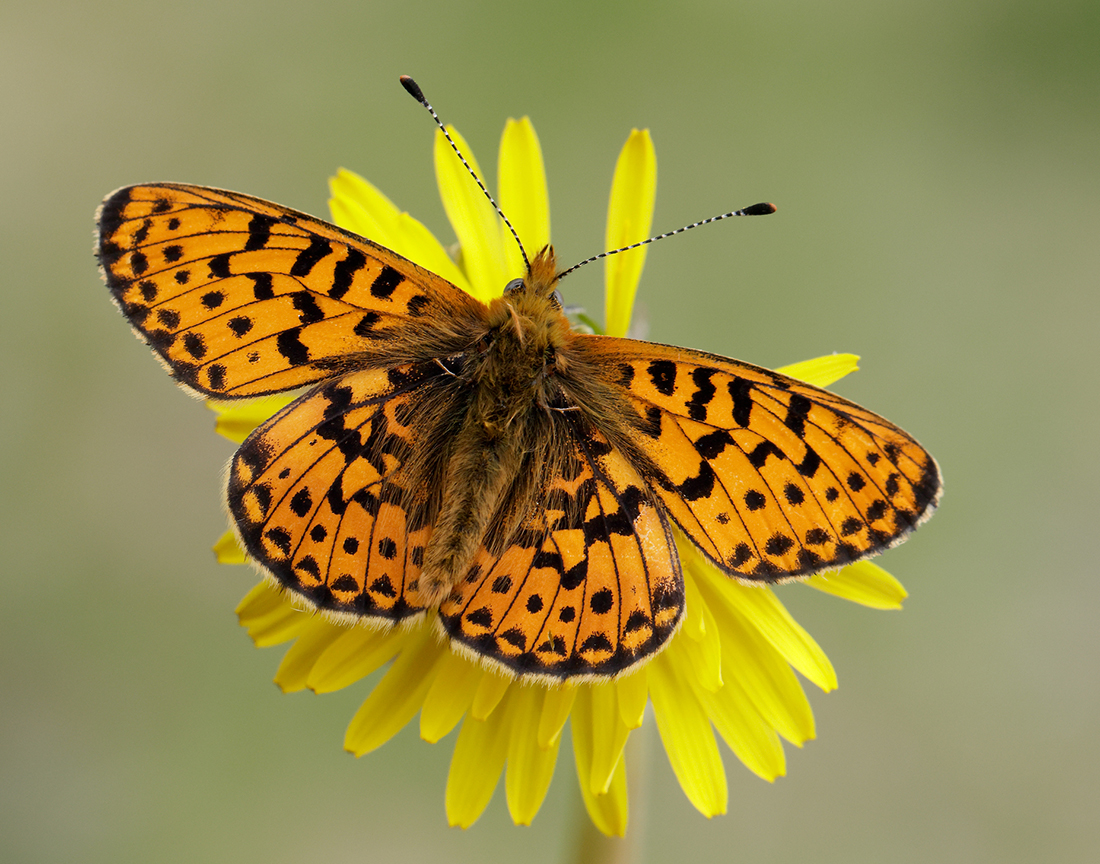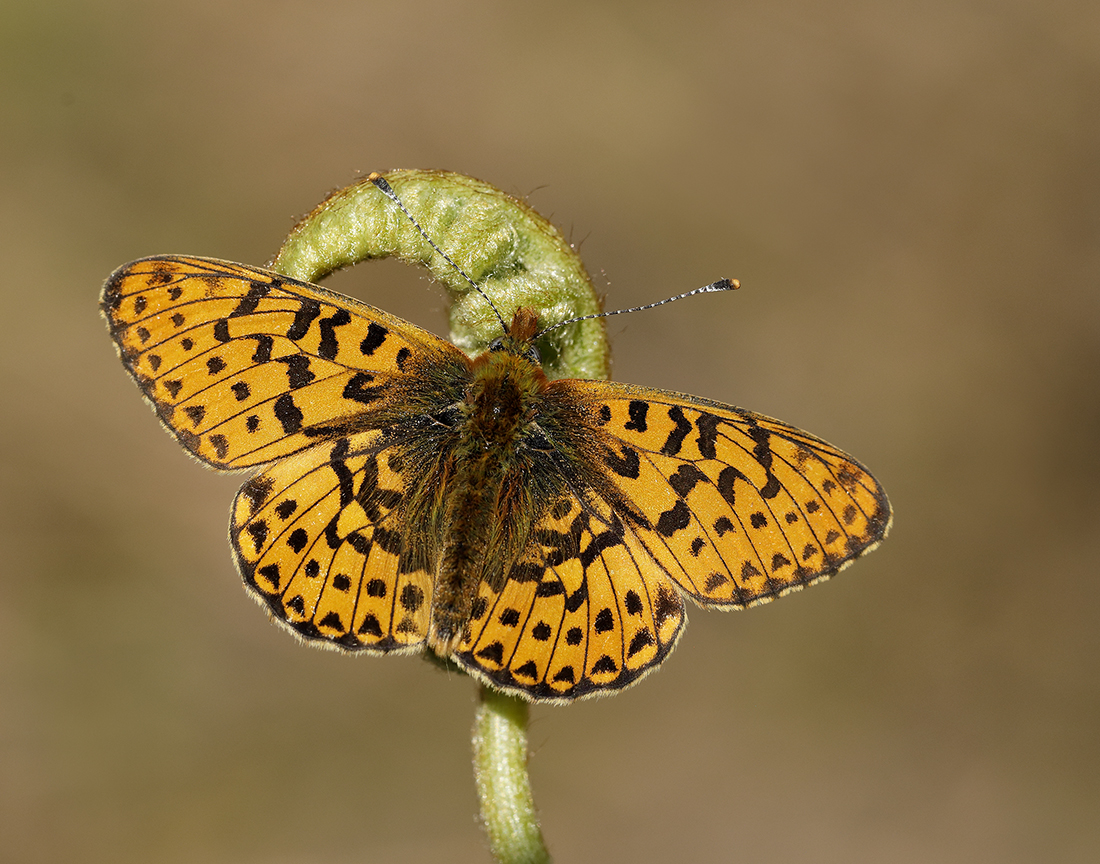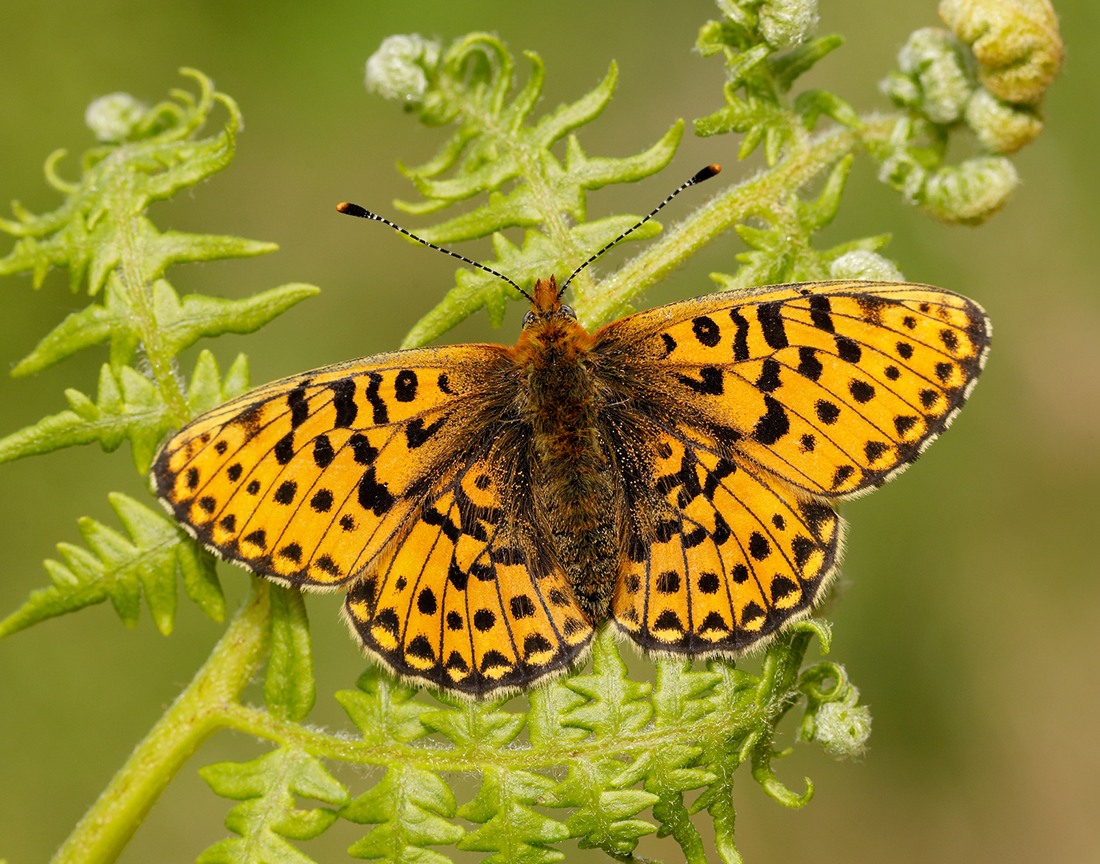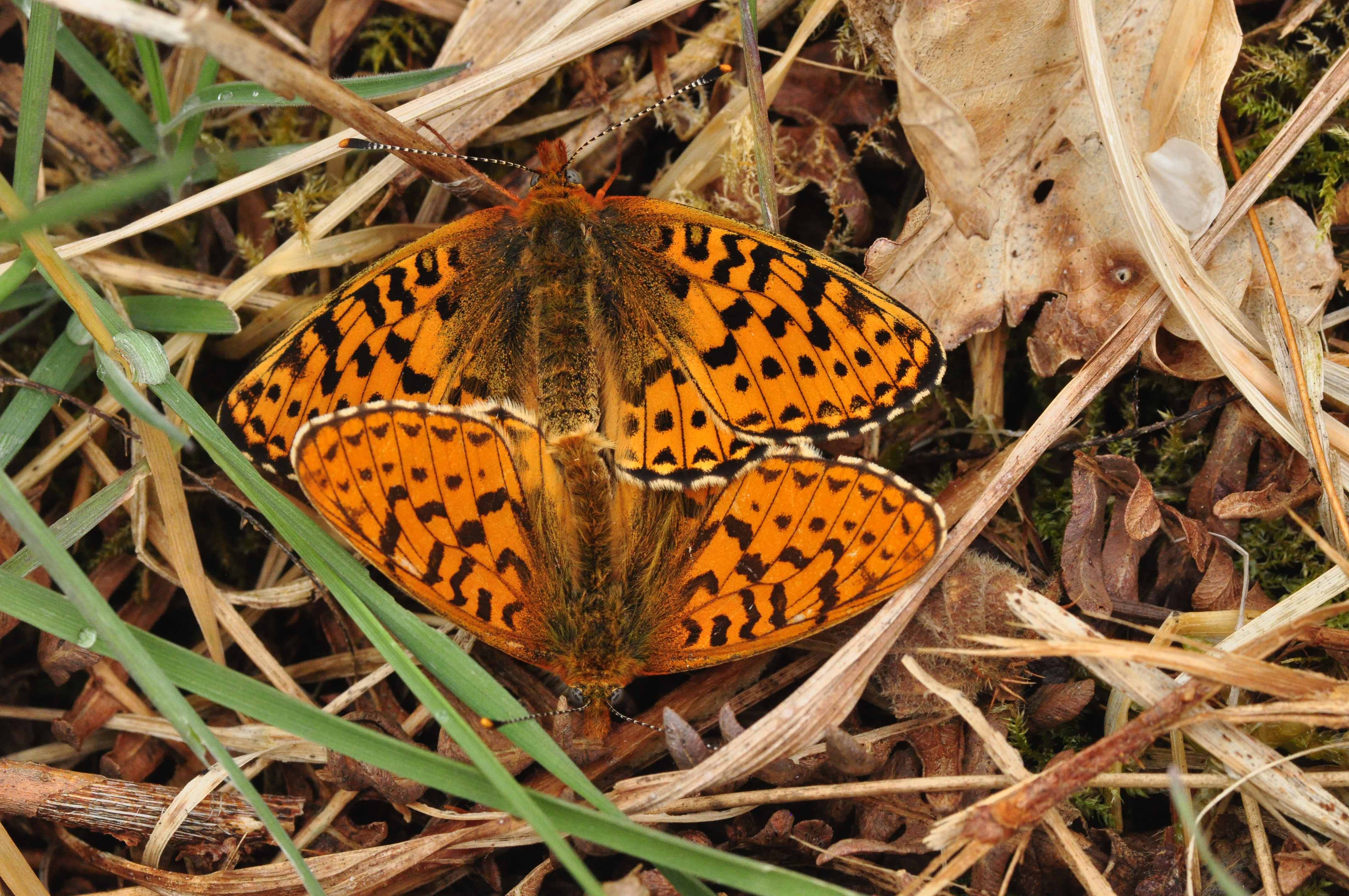This butterfly has undergone a huge contraction in range over Britain in the last few decades, and sites have been lost in Dumfries and Galloway, although we have by far the largest colony in southern Scotland at Mabie Forest.
The Pearl-bordered Fritillary has had a series of exceptionally good years at Mabie Forest where it has spread through many parts of the forest, and (re)colonised nearby woodlands such as Auchenfad, Trostan and The Hills. Conservation work led by Forest and Land Scotland & Butterfly Conservation at Marie Forest is helping to sustain the population there.
Identification
The Pearl-bordered Fritillary is very similar to the closely-related Small Pearl-bordered Fritillary in size and appearance, and can occur in the same places and at the same time of year, so care is needed in its identification. The name comes from the beautiful silver spots along the edge of the undersides of the hind wings, and it is the undersides that provide the solution to telling the two species apart.
Life cycle & flight period
Pearl-bordered Fritillaries have one generation a year, and are usually on the wing from early May to the end of June, but in a warm, sunny year, they can be seen in late April. In a cool year they might be delayed until mid-May, finishing in early July. Small Pearl-bordered Fritillaries are normally two to three weeks behind their cousins, so the two species’ flight periods overlap. Overwinters as an egg.
Larval foodplant
Common Dog-violet
Habitats
Colonies of the Pearl-bordered Fritillary are almost always to be found on dry, south-facing slopes that receive full sun. Early spring is a crucial time as this is when the caterpillars emerge from their winter hibernation and start to feed. The caterpillars need to be able to bask on warm, dry surfaces in the spring sunshine, sheltered from cooling breezes. Although air temperatures may be only 5°C or 10°C, remarkably, they need to raise their body temperature to around 30°C in order to develop well.
Open woodland with sparse Bracken is the ideal habitat for the Pearl-bordered Fritillary, the dead leaf litter in early spring providing the perfect microclimate for both the caterpillar and its Common Dog-violet foodplant.

